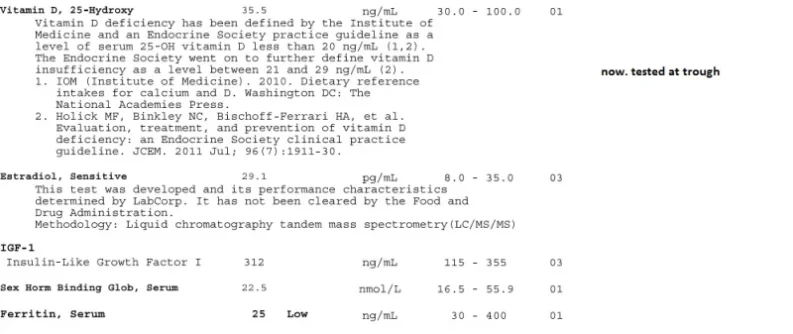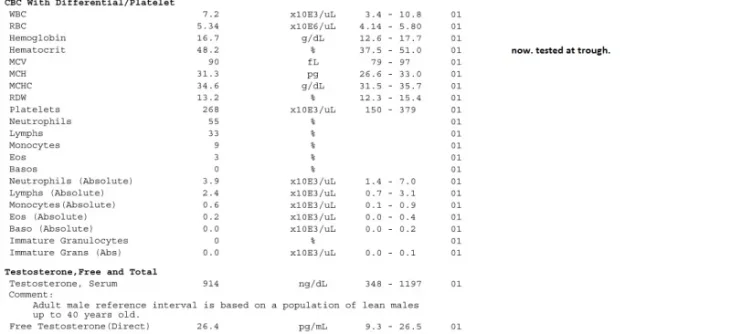If the dose/linearity illustration isn't needed then I have a lot more data, which I plotted previously:
View attachment 11146
Very nice. Nelson's factor of 10 solution sorta works with the Tru-T numbers (slope would be closer to 1.5 ish if you used the calc Vermeulen numbers (for someone with reasonable SHBG). So direct RIA off by a factor of 14 (in comparison with Tru-T) or ~5-6 (in comparison with Calc Vermeulen free T).
Thanks for putting that graphic together.
This plot looks similar to your plot:
In recent years, the RIA method has been criticized by
some experts as inaccurate due to substantial numerical
discrepancies between RIA and EqD results, and too heavily
influenced by either TT [7] or by SHBG [8]. The numerical
differences lead to confusion in interpreting clinical results
and can complicate efforts to establish biochemical standards
for the diagnosis of TD. Based on these issues, some experts
advocate that the RIA method should not be used in clinical
care and that conclusions of previous research studies
utilizing the RIA method may not be valid [9]. Nonetheless,
RIA remains in widespread use and some authors have argued
it provides clinically meaningful information in men when
interpreted using an assay-specific reference range [10].
Currently, there is a paucity of data directly comparing the
two methods against the gold standard in a clinical population
of men. Our goal in this study is to examine the relationships
between RIA, cFT, EqD, and TT in a population of men
presenting to an outpatient andrology clinic.


















